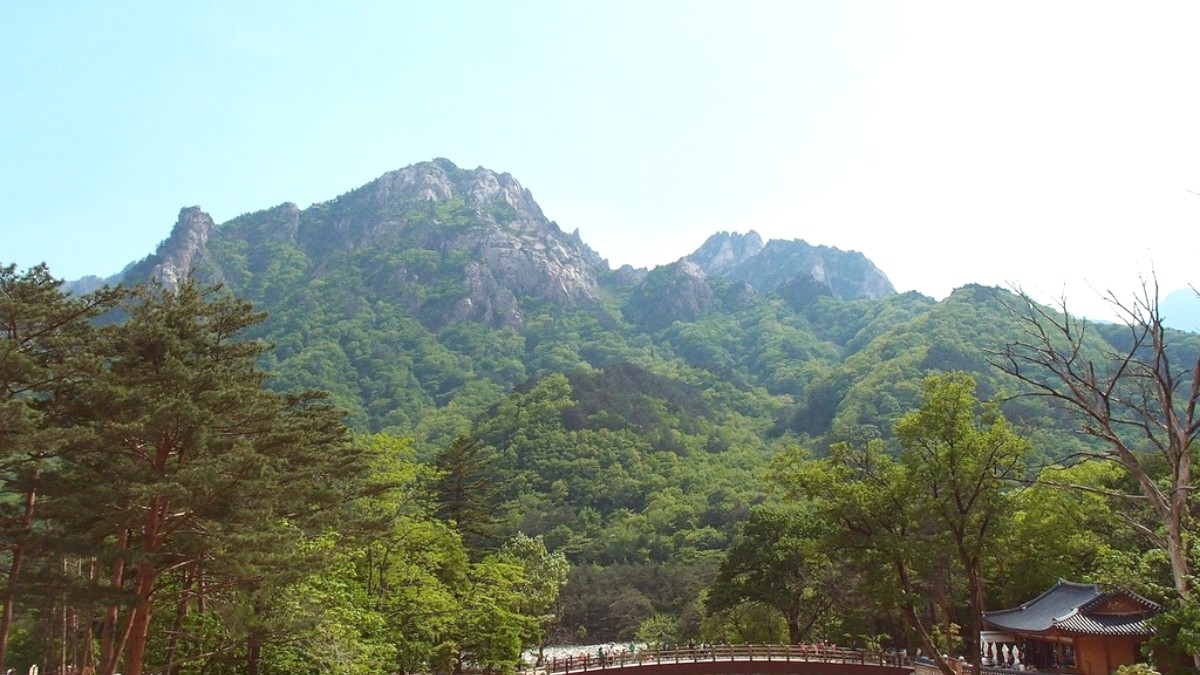
Gang Won Do, South Korea
Climate Patterns Throughout the Year:
Monsoons (Jangma): Occur mainly from late June to late July. These bring heavy, prolonged rainfall. Monsoons can lead to trail closures and reduced visibility, impacting hiking plans.
Typhoons: Possible from late summer (August) through early autumn (September). Typhoons bring strong winds and heavy rain, which severely impacts travel plans and park access. Monitor forecasts during these months.
Autumn provides crisp air and excellent visibility. Spring conditions are pleasant for lower to mid-level trails, with wildflowers. Summer, with rain, delivers full waterfalls; rain gear and tolerance for humidity are needed. Winter hiking limits to lower, cleared trails. Proper winter gear, including Waterproof boots and crampons for icy conditions, are necessary.
Autumn (for foliage) and winter (for snowscapes) present unique and dramatic photographic opportunities. Clear days in any season present stunning vistas.
Strenuous hiking can be challenging in hot conditions.
Extended periods below freezing with significant snowfall, especially at higher altitudes, require preparation.
Air pollution, or "fine dust," concerns in spring and winter. Check forecasts.
Always check park conditions before setting out on challenging hikes.
Carry appropriate gear for all seasons, even for unexpected weather changes.
The cable car operates almost year-round and is less impacted by general weather. Views are best on clear days. The longest queues for the cable car occur during the peak autumn season.
Consult reliable weather forecasts for Sokcho and Seoraksan National Park before and during your trip.
Remain flexible with your itinerary, especially for outdoor activities, as weather can change rapidly in mountainous regions.
The park's beauty transforms with each season.
South Korea uses its own currency.
Currency Information and Exchange Considerations:
₩58,500 - ₩113,500 (US$45-87) covering hostel, street food, and local buses.
₩140,000 - ₩275,000 (US$108-212) covering comfortable hotel, mid-range dining, and occasional taxis.
₩360,000 - ₩810,000+ (US$277-623+) covering high-end resorts, fine dining, and private transfers.
These approximate daily costs exclude long-distance travel to and from Sokcho.
Tipping Culture and Expectations: Tipping is generally not customary or expected in South Korea. This applies to restaurants, hotels, and taxi drivers. Attempts to tip sometimes cause confusion or are politely declined by staff.
Smart choices can stretch your budget further during your visit.
Utilize public transportation: Express buses from Seoul travel economically. Local buses in Sokcho transport cheaply around the city and to the national park. Eat local: Street food, meals at local markets (like Sokcho Jungang Market), and smaller restaurants offer authentic and affordable meals.
Bring your own Water bottle: Refillable water fountains are available in the park and public spaces. Consider a Water filter bottle for hiking if you plan to refill from natural water sources. Visit during shoulder seasons: Travel during late spring or early September to avoid peak autumn foliage season prices. Pack snacks: Bring energy bars or trail mix for hikes instead of buying more expensive items at park convenience stores. Book accommodation in Sokcho city: This often proves cheaper than lodging directly at the park entrance.